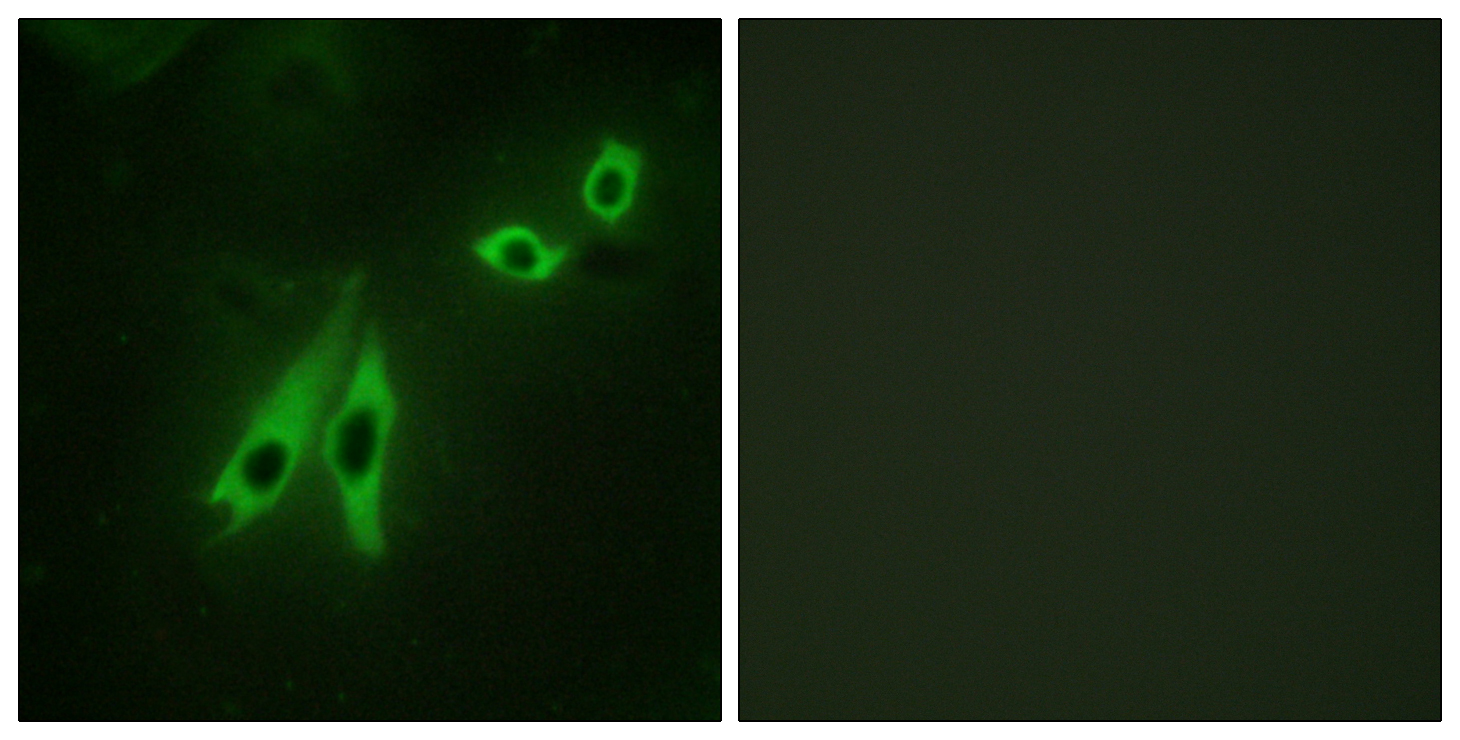
WB analysis of human testis lysate using GTX19046 AKAP3 antibody, C-term. Dilution : 1microg/ml Loading : 35microg protein in RIPA buffer
AKAP3 antibody, C-term
GTX19046
ApplicationsWestern Blot
Product group Antibodies
TargetAKAP3
Overview
- SupplierGeneTex
- Product NameAKAP3 antibody, C-term
- Delivery Days Customer7
- Application Supplier NoteWB: 1-3microg/ml. *Optimal dilutions/concentrations should be determined by the researcher.Not tested in other applications.
- ApplicationsWestern Blot
- CertificationResearch Use Only
- ClonalityPolyclonal
- Concentration0.50 mg/ml
- ConjugateUnconjugated
- Gene ID10566
- Target nameAKAP3
- Target descriptionA-kinase anchoring protein 3
- Target synonymsAKAP 110, AKAP110, CT82, FSP95, HEL159, PRKA3, SOB1, SPGF82, A-kinase anchor protein 3, A kinase (PRKA) anchor protein 3, A-kinase anchor protein, 110kDa, Fibrous Sheath Protein of 95 kDa, cancer/testis antigen 82, epididymis luminal protein 159, epididymis secretory sperm binding protein, fibrousheathin I, fibrousheathin-1, protein kinase A binding protein AKAP 110, protein kinase A-anchoring protein 3, sperm oocyte-binding protein 1
- HostGoat
- IsotypeIgG
- Protein IDO75969
- Protein NameA-kinase anchor protein 3
- Scientific DescriptionThis gene encodes a member of A-kinase anchoring proteins (AKAPs), a family of functionally related proteins that target protein kinase A to discrete locations within the cell. The encoded protein is reported to participate in protein-protein interactions with the R-subunit of the protein kinase A as well as sperm-associated proteins. This protein is expressed in spermatozoa and localized to the acrosomal region of the sperm head as well as the length of the principal piece. It may function as a regulator of motility, capacitation, and the acrosome reaction. [provided by RefSeq, May 2013]
- Storage Instruction-20°C or -80°C,2°C to 8°C
- UNSPSC12352203




